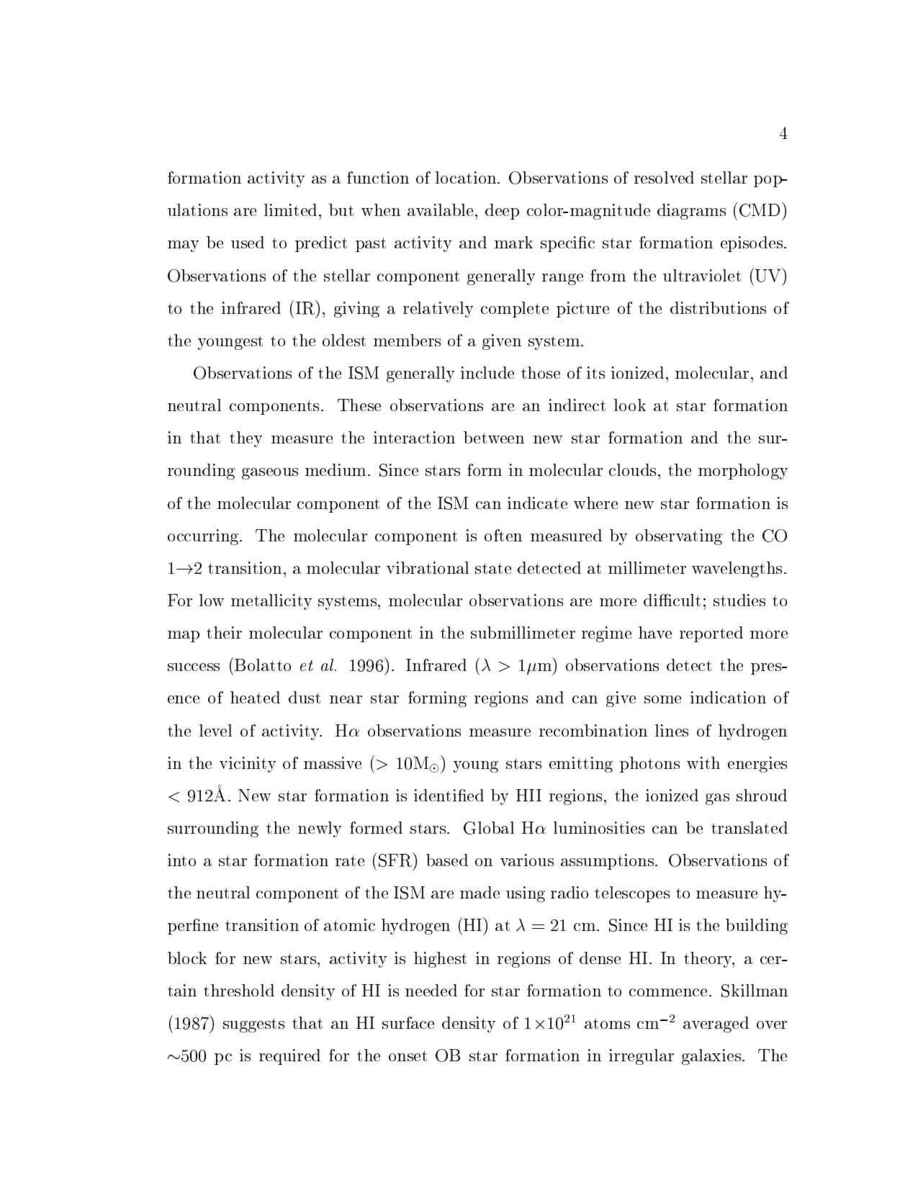
4
formation activity as a function of location. Observations of resolved stellar pop-
ulations are limited, but when available, deep color-magnitude diagrams CMD
may be used to predict past activity and mark speci c star formation episodes.
Observations of the stellar component generally range from the ultraviolet UV
to the infrared IR, giving a relatively complete picture of the distributions of
the youngest to the oldest members of a given system.
Observations of the ISM generally include those of its ionized, molecular, and
neutral components. These observations are an indirect look at star formation
in that they measure the interaction between new star formation and the sur-
rounding gaseous medium. Since stars form in molecular clouds, the morphology
of the molecular component of the ISM can indicate where new star formation is
occurring. The molecular component is often measured by observating the CO
1
!
2 transition, a molecular vibrational state detected at millimeter wavelengths.
For low metallicity systems, molecular observations are more di cult; studies to
map their molecular component in the submillimeter regime have reported more
success Bolatto
et
al.
1996. Infrared
1
m observations detect the pres-
ence of heated dust near star forming regions and can give some indication of
the level of activity. H observations measure recombination lines of hydrogen
in the vicinity of massive 10M young stars emitting photons with energies
912A. New star formation is identi ed by HII regions, the ionized gas shroud
surrounding the newly formed stars. Global H luminosities can be translated
into a star formation rate SFR based on various assumptions. Observations of
the neutral component of the ISM are made using radio telescopes to measure hy-
per ne transition of atomic hydrogen HI at
= 21 cm. Since HI is the building
block for new stars, activity is highest in regions of dense HI. In theory, a cer-
tain threshold density of HI is needed for star formation to commence. Skillman
1987 suggests that an HI surface density of 1
10
21
atoms cm
,
2
averaged over
500 pc is required for the onset OB star formation in irregular galaxies. The
